Geographical Overview of Adrar, Algeria
Adrar is a vast and remote region located in southwestern Algeria, characterized by its expansive desert landscape and unique geological features. Known for its arid climate and striking natural formations, Adrar sits within the Sahara Desert and is part of the Adrar Province. The area is distinguished by its rugged mountains, ancient archaeological sites, and traditional Berber villages, making it a significant location both geographically and culturally. Its strategic position and natural resources have shaped its historical and contemporary importance within Algeria.
Location and Boundaries
Adrar, located in southwestern Algeria, is a vast desert region known for its dramatic landscape and significant geographical features. It is situated within the Adrar Province and is characterized by a mixture of rocky plateaus, sandy dunes, and mountain ranges. The area is part of the Sahara Desert, which dominates the region’s climate and terrain.
Geographically, Adrar shares borders with several key regions and countries. To the north, it is bordered by the provinces of Tamanrasset and Bordj Badji Mokhtar. To the east, it extends toward the province of In Salah, while to the south and west, it borders the international boundaries with Mali and Niger, respectively. The region’s extensive boundaries encompass diverse environments, from arid sands to rugged mountains, making it a significant part of the Sahara’s geographical landscape.
Topography and Landscape
Adrar, located in southern Algeria, is renowned for its vast and arid landscape that forms part of the Sahara Desert. The region features a predominantly desert topography characterized by expansive sand dunes, rocky plateaus, and rugged mountain ranges. The landscape is marked by its striking natural formations, including the Adrar Plateau, which rises sharply from the surrounding desert plains, offering a dramatic contrast to the flat sandy areas.
The topography of Adrar includes a series of highlands and plateaus that provide a unique scenery within the desert environment. The region’s elevation varies, with some areas reaching several hundred meters above sea level, creating an uneven terrain that influences local climate and vegetation. The landscape is also dotted with oasis areas, where water sources sustain sparse vegetation and small settlements, adding diversity to the otherwise barren terrain.
Overall, Adrar’s geography is distinguished by its combination of highlands, rocky formations, vast sand dunes, and sparse vegetation, illustrating the rugged beauty of the Sahara and contributing to its ecological and cultural significance in Algeria.
Climate and Weather Patterns
Adrar, located in southwestern Algeria, is a vast desert region characterized by its arid landscape and expansive sandy plains. It sits within the Sahara Desert, making it a significant part of Algeria’s southern territory. The area is known for its rugged beauty, with mountain ranges such as the Sahara Atlas and numerous oases scattered throughout the desert. The city of Adrar serves as an administrative and cultural center for the region, offering a gateway to exploring the unique geography of the area.
The climate in Adrar is predominantly desert, with extreme temperature variations between day and night. Summers are intensely hot, often exceeding 45°C (113°F), while winters are mild with temperatures rarely dropping below freezing. Rainfall in this region is minimal, usually less than 100 mm annually, contributing to its arid conditions. Weather patterns are influenced by the Sahara’s warm, dry air masses, leading to clear skies most of the year and infrequent precipitation.
- Hot and dry summers with temperatures often surpassing 45°C (113°F).
- Mild winters with daytime temperatures around 15–20°C (59–68°F) and cool nights.
- Minimal annual rainfall, generally less than 100 mm, contributing to desert conditions.
- Rare weather phenomena include dust storms and rare flash floods during brief rainy periods.
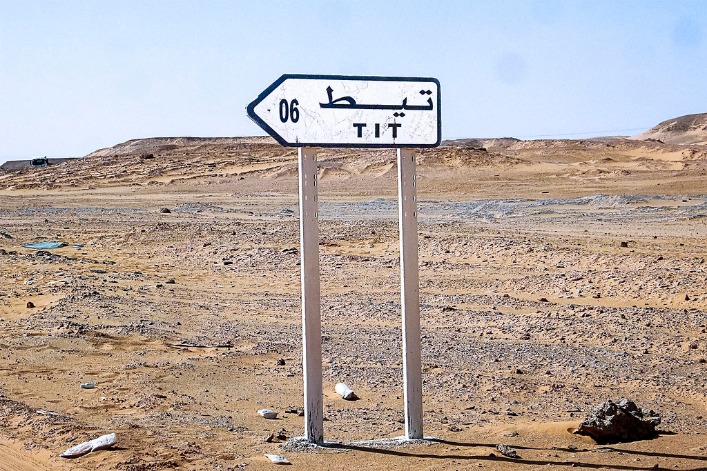
Historical Background of Adrar
Adrar, a prominent region in Algeria, boasts a rich historical background that dates back thousands of years. Known for its remarkable desert landscapes and ancient cultural heritage, Adrar has been a crossroads of various civilizations, including Berbers, Phoenicians, and Romans. Its strategic location has contributed to its historical significance, serving as a vital trade route and settlement area throughout history. The region’s archaeological sites and traditional practices offer a glimpse into its long-standing historical narrative.
Ancient Civilizations and Settlements
Adrar, located in southwestern Algeria, boasts a rich historical background that reflects its significance in ancient civilizations and early settlements. Historically, the region has been inhabited since prehistoric times, with archaeological findings indicating the presence of early nomadic tribes that relied on the area’s oases and desert resources for survival.
The area was part of the extensive trans-Saharan trade routes that connected sub-Saharan Africa with North Africa and the Mediterranean. During antiquity, Adrar served as a crucial link for traders exchanging salt, gold, and other valuable commodities. The remnants of ancient caravan routes and trading posts highlight its vital role in facilitating commerce across deserts.
Several ancient settlements and fortified villages dot the landscape, showcasing traditional Berber architecture and cultural heritage. Notably, the region was influenced by various empires, including the Garamantian civilization, which thrived in parts of the Sahara around 500 BC to 700 AD. These settlements often centered around water sources, like wells and springs, which sustained human activity in an otherwise arid environment.
Throughout history, Adrar remained a strategic and cultural hub, with its historical sites offering insights into its diverse past. The fusion of indigenous Berber traditions and external influences over centuries has shaped the unique heritage found in Adrar today, making it a significant area for understanding the ancient history of the Sahara and North Africa.
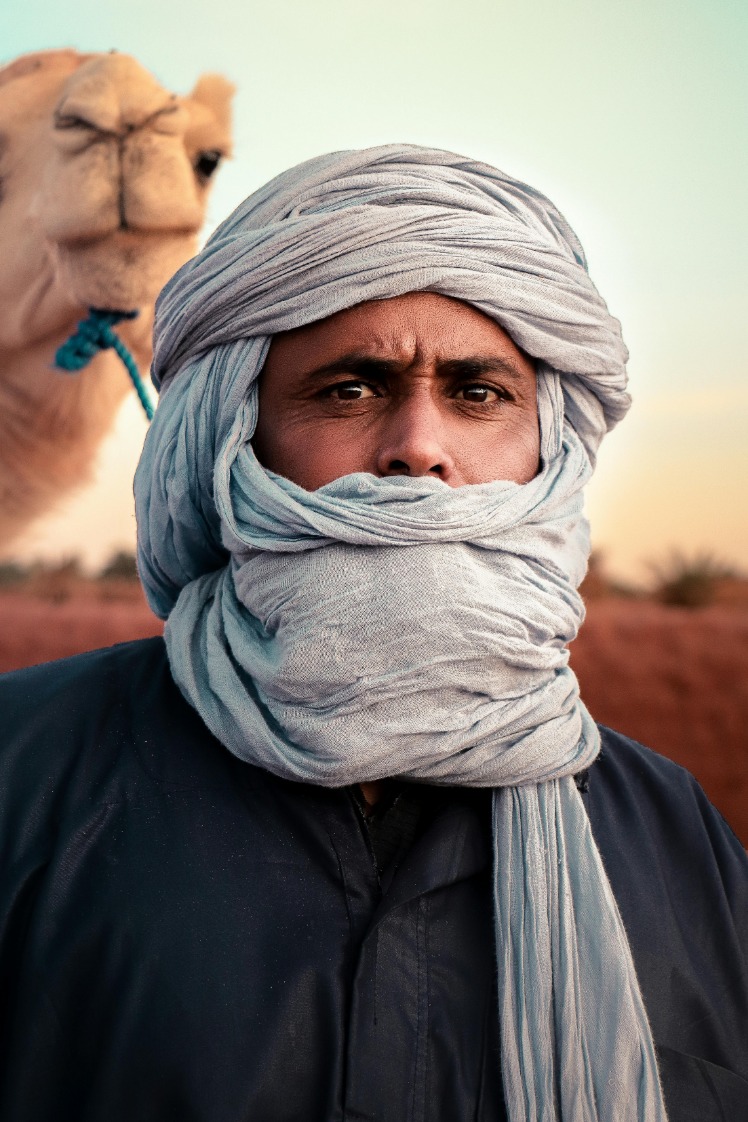
Colonial Era and Modern Development
Adrar, located in southwestern Algeria, boasts a rich historical background influenced by ancient civilizations and its strategic position along trans-Saharan trade routes. Historically, it was part of the ancient Berber kingdoms and later came under the influence of various Arab and Moorish cultures. The region’s significance grew due to its role as a crossroads for traders and caravans traveling across the Sahara, contributing to its diverse cultural heritage. During the colonial era, Adrar fell under French control in the 19th century, which led to the development of infrastructure such as roads, administrative buildings, and military establishments, often to facilitate resource extraction and control over the vast desert territories. The period also saw resistance movements by local populations against colonial domination, which eventually contributed to Algeria’s independence movement in the mid-20th century. In modern times, Adrar has experienced significant development driven by government initiatives aimed at boosting economic activity, especially in the fields of mining, agriculture, and renewable energy. Its strategic location continues to make it an important center for regional trade, along with efforts to improve infrastructure, education, and tourism, highlighting its transition from a remote desert outpost to a vital part of Algeria’s modern landscape.
Cultural Heritage and Influences
Adrar, located in southwestern Algeria, boasts a rich historical background that dates back to ancient times. The region has been inhabited by various Berber tribes and later became part of the trans-Saharan trade routes, facilitating exchanges of goods, culture, and knowledge. Throughout history, Adrar served as a strategic crossroads for traders, explorers, and travelers, which contributed to its diverse cultural influences.
The cultural heritage of Adrar is deeply rooted in its Berber traditions, evident in its architecture, music, and festivals. The region is renowned for its kasbahs, ancient fortress-like structures built from local materials that reflect traditional Berber construction techniques. Music and dance play a vital role in local festivities, often featuring traditional instruments and songs that tell stories of the region’s history and folklore.
Influences from Arab, French, and other North African cultures are also woven into the fabric of Adrar’s cultural identity. French colonial history introduced new architectural styles and educational influences, which can still be observed today. Moreover, the Islamic faith holds a significant place in the community, shaping many aspects of daily life, cultural practices, and festivals. Overall, Adrar’s cultural heritage is a testament to its historical role as a crossroads of civilizations, blending various cultural influences into a unique and enduring identity.
Major Attractions and Natural Landmarks
Adrar, Algeria, is renowned for its stunning natural landmarks and major attractions that draw travelers from around the world. The region boasts vast desert landscapes, unique geological formations, and cultural sites that highlight its rich history. Exploring these natural wonders offers a captivating experience of the desert’s beauty and the enduring legacy of the local communities.
Timimoun Oasis and Red Dunes
Adrar Algeria is renowned for its stunning natural beauty and unique landscapes, attracting travelers from around the world. Among its major attractions are the Timimoun Oasis, a vibrant green sanctuary amidst the arid desert, and the awe-inspiring Red Dunes that create a mesmerizing and otherworldly environment. The Timimoun Oasis offers a peaceful retreat with lush date palms, traditional mud-brick architecture, and a glimpse into the historic Berber culture. Meanwhile, the Red Dunes, with their shifting shapes and vivid crimson hues, provide breathtaking scenery perfect for desert safaris, photography, and adventure activities. Together, these landmarks showcase the diverse natural wonders of Adrar, making it a must-visit destination for explorers and nature enthusiasts.
Adrar’s Mountain Ranges
Adrar, Algeria, is renowned for its stunning mountain ranges and natural landmarks that attract travelers and nature enthusiasts alike. The Adrar Mountains are part of the larger Saharan Atlas, offering a rugged and majestic landscape filled with dramatic peaks, deep valleys, and unique geological formations. These mountains provide a scenic backdrop for various outdoor activities such as hiking, rock climbing, and exploring ancient desert trails.
Among the major natural landmarks in the Adrar region are the famous Tifoultoute Oasis, known for its lush palm groves nestled amidst arid surroundings, and the nearby Aoulef Salt Flats that shimmer under the sun. The Adrars also feature impressive canyons like the Tagrourt Gorge, which showcases striking rock formations and offers a tranquil escape into nature. These landmarks not only highlight the region’s natural beauty but also reflect its historical significance, as many of these sites have been part of ancient trade routes and settlements.
The Adrar Mountain Ranges stand as a testament to Algeria’s diverse geological history, with their rugged terrains and breathtaking scenery making them a must-visit destination for adventure travelers and those seeking to connect with natural beauty. The region’s natural landmarks serve as a reminder of the desert’s harsh yet captivating environment, offering a unique experience for visitors exploring the heart of the Sahara.
Ancient Ruins and Archaeological Sites
Adrar, Algeria, is renowned for its stunning natural landscapes, ancient historical sites, and archaeological treasures. The region’s dramatic desert scenery features vast sand dunes, rugged mountains, and expansive plateaus that attract nature lovers and explorers alike. Among its notable natural landmarks are the breathtaking Tassili n’Ajjer, a UNESCO World Heritage site famous for its surreal rock formations and vibrant cave paintings depicting early human life. The Adrar Mountains themselves offer impressive vistas and challenging treks, showcasing the area’s geological diversity.
In addition to its natural beauty, Adrar is home to numerous ancient ruins and archaeological sites that reveal its rich historical heritage. The ruins of Tin Merzouga, an ancient ksar, exemplify traditional Berber architecture and offer insights into the region’s historical settlement patterns. The remnants of the ancient trading routes and caravanserais along the old desert pathways highlight Adrar’s role as a vital hub in trans-Saharan trade. These archaeological sites provide a glimpse into the ancient civilizations that once thrived in the Sahara and their enduring cultural influence.
Economy and Local Industries
Adrar, located in the southwestern part of Algeria, boasts a diverse economy primarily driven by its rich natural resources and local industries. The region’s economy relies heavily on agriculture, mining, and energy production, which play a vital role in supporting both local communities and the broader national economy. As an important hub for various sectors, Adrar’s economic activities are shaped by its unique geographic and cultural landscape, fostering growth and development in the area.
Agriculture and Irrigation Practices
Adrar, located in the Sahara Desert of Algeria, has an economy primarily based on its local industries, agriculture, and irrigation practices. The region’s economy benefits from its natural resources, including minerals and oil, which contribute significantly to its development. Agriculture in Adrar is adapted to the harsh desert environment, focusing on drought-resistant crops such as dates, barley, and millet. Traditional irrigation methods, including well-based and underground water extraction systems, are employed to sustain farming activities amidst scarce water resources. Recent initiatives aim to improve irrigation efficiency and expand arable land, supporting local farmers and boosting food production. The combination of resource exploitation and innovative agricultural practices is vital for the economic stability and growth of Adrar, fostering resilience against desert climate challenges.
Mining and Natural Resources
Adrar, located in the southwestern part of Algeria, has a diverse economy largely driven by its rich natural resources and local industries. The region benefits from significant mining activities, particularly in phosphate, iron ore, and other mineral deposits, which contribute substantially to its economic stability. The exploitation of these natural resources has fostered the development of related industries, including processing and export operations, creating employment opportunities for the local population.
In addition to mining, Adrar’s economy is supported by agriculture and pastoralism, with traditional practices adapted to the arid climate. Local industries such as construction, small-scale manufacturing, and trade also play critical roles in sustaining the community. The region’s strategic location as a crossroads for transportation routes further enhances its role as a hub for commerce and resource distribution within Algeria.
Overall, Adrar’s natural resources form the backbone of its economic activities, fostering development in both extractive industries and supporting sectors, thus contributing to the overall growth and stability of the region’s economy.
Tourism and Hospitality Sector
Adrar, Algeria, boasts a diverse economy primarily driven by its rich natural resources and strategic location. The region’s economy benefits significantly from oil and gas extraction, which plays a crucial role in its industrial sector. Additionally, agriculture and livestock farming contribute to local livelihoods, supported by the region’s arid and semi-arid landscapes.
The local industries in Adrar focus on mineral processing, renewable energy, and construction materials, leveraging the region’s natural mineral deposits and solar energy potential. These industries help diversify the economic base and promote sustainable development within the area.
Tourism and the hospitality sector are emerging as vital components of Adrar’s economy, due to its unique cultural heritage and striking desert landscapes. Visitors are attracted to historical sites, ancient ksars, and natural features like the Tademaït Plateau and the oasis towns. The sector is growing with the development of hotels, guesthouses, and tour services aimed at enhancing visitor experiences and showcasing Adrar’s natural and cultural attractions.
Cultural and Social Aspects
Adrar, located in the heart of Algeria, is a region rich in cultural and social diversity that reflects its long history and vibrant traditions. The area’s unique customs, language variations, and community practices offer a fascinating glimpse into the way of life of its inhabitants. Exploring the cultural and social aspects of Adrar reveals the deep connections between language, identity, and tradition that shape this distinctive part of Algeria.
Local Traditions and Festivals
Adrar, Algeria, is a region rich in cultural and social traditions that reflect its historical roots and diverse communities. The local customs and practices are deeply intertwined with the desert environment and the nomadic lifestyle of many inhabitants. Festivals and traditional events play a vital role in maintaining the cultural identity of the region, offering a glimpse into its vibrant heritage.
- Annual festivals such as the Timimoun Festival celebrate local music, dance, and crafts, bringing communities together to honor their shared history.
- The traditional art of camel racing is a popular social activity that showcases the skills passed down through generations.
- Local markets, known as souks, are lively gatherings where artisans sell handmade jewelry, textiles, and pottery, preserving traditional craftsmanship.
- Religious celebrations like Eid al-Fitr and Eid al-Adha are observed with communal prayers, feasts, and social gatherings, reinforcing community bonds.
- Storytelling and poetry remain vital aspects of social life, with elders sharing tales and oral histories that preserve the region’s identity and history.
Language and Ethnic Composition
Adrar, located in southwestern Algeria, boasts a rich tapestry of cultural and social aspects that reflect its historical and geographical context. Its communities are deeply rooted in Berber traditions, which influence local customs, celebrations, and daily life. The social fabric is characterized by strong kinship ties and a sense of communal solidarity, often seen in traditional gatherings and craftsmanship. Language plays a significant role in preserving these cultural identities, with Tamazight (Berber) widely spoken alongside Arabic. This bilingualism underscores the importance of heritage in the region and the ongoing efforts to maintain indigenous languages amidst modern influences. Ethnically, Adrar is predominantly inhabited by Berber groups, with Arab communities also present, creating a diverse mosaic of identities that contribute to the unique cultural landscape of the area.
Gastronomy and Local Cuisine
Adrar, located in the southwestern region of Algeria, is a city rich in cultural heritage and social traditions that reflect its Bedouin roots and desert environment. The local community maintains a vibrant lifestyle deeply rooted in history and resilience, often demonstrated through traditional practices and festive celebrations.
Gastronomy in Adrar is characterized by unique desert-inspired dishes that make use of available ingredients. The local cuisine showcases a variety of hearty, flavorful foods that are integral to the region’s cultural identity. Traditional cooking methods and local ingredients create a distinctive culinary experience that visitors find fascinating.
- Moroccan-style tagines filled with dates, almonds, and local spices
- Prepared couscous commonly served with vegetables and meat
- Harira, a hearty soup made with lentils, tomatoes, and herbs
- Sweet treats such as dates stuffed with almonds or sesame-based sweets
Local cuisine is often enjoyed at social gatherings, markets, and festivals, where food becomes a central element of community bonding. The rich flavors and traditional recipes passed down through generations embody the cultural essence of Adrar’s people, highlighting their deep connection to the desert landscape and their heritage.
Transportation and Accessibility
Adrar, located in the desert region of Algeria, offers unique transportation and accessibility challenges due to its remote and rugged landscape. Ensuring smooth connectivity within the area is essential for the movement of residents, visitors, and goods, contributing to the region’s development and integration with the rest of the country. Understanding the transportation infrastructure in Adrar provides insight into how access is maintained in such a distinctive environment.
Road Networks and Connectivity
Adrar, Algeria, boasts a well-developed transportation network that enhances connectivity within the region and links it to other parts of the country. Its road networks are primarily composed of paved roads and highways that facilitate the movement of people and goods across the vast desert landscape. These routes connect Adrar to major cities such as Tamanrasset and Ouargla, ensuring regional accessibility and economic activity. Additionally, the strategic positioning of roads aids in supporting the tourism sector, allowing visitors to explore the natural beauty and cultural sites of the area. The connectivity infrastructure continues to improve, with ongoing projects aimed at expanding and maintaining the roads to better serve both residents and visitors, ultimately contributing to the region’s development and integration into national and international transportation systems.
Airports and Air Travel Options
Adrar, Algeria, is a remote desert city that offers various transportation and accessibility options for travelers. The region is primarily accessible by air, with Adrar Airport serving as the main gateway for visitors arriving from other parts of Algeria and occasionally from international destinations. The airport handles domestic flights, making it a convenient entry point for travelers heading to the area.
Beyond air travel, road transportation plays a vital role in connecting Adrar with neighboring cities and regions. Well-maintained roads and desert routes facilitate travel by taxis, buses, and private vehicles, providing access to the surrounding desert landscapes and attractions. Visitors often use 4×4 vehicles to navigate the rugged terrain and explore remote areas around Adrar.
Though rail services are limited in this desert region, efforts are ongoing to improve accessibility through infrastructure development. Visitors are advised to plan their travels carefully, considering the availability of transportation options and the remote location of Adrar. Overall, air travel combined with overland routes ensures that travelers can reach and explore this fascinating part of Algeria efficiently.
Within-region Transit and Mobility
Transportation and accessibility in Adrar, Algeria, are vital components for ensuring mobility within the region. The area benefits from a network of roads connecting key towns and facilitating movement across the arid landscape. Within-region transit options primarily include shared taxis and minibusses that serve local residents and visitors, providing accessible and affordable transport solutions. Additionally, efforts are underway to improve infrastructure, such as paving roads and developing more reliable public transit routes, which enhance mobility for residents, reduce travel times, and support economic activities. Accessibility remains a priority, with initiatives aimed at accommodating all populations, including those with mobility challenges, ensuring equitable transportation options throughout Adrar.
Environmental and Conservation Initiatives
Adrar, a stunning region in Algeria, is renowned for its vast desert landscapes and rich biodiversity. Recognizing the importance of preserving this unique environment, various environmental and conservation initiatives have been launched to protect its natural resources and promote sustainable development. These efforts aim to conserve the region’s delicate ecosystems, support local communities, and ensure that Adrar’s beauty and ecological significance are maintained for future generations.
Desert Ecosystem Preservation
Adrar in Algeria is a remarkable desert region that hosts a fragile and unique desert ecosystem. Preserving this landscape is crucial for maintaining the region’s biodiversity and cultural heritage. Environmental and conservation initiatives in Adrar focus on sustainable management practices that protect native flora and fauna while promoting eco-tourism. Efforts include establishing protected areas to prevent overexploitation of natural resources, promoting community involvement in conservation projects, and raising awareness about the importance of desert ecosystem preservation. Additionally, research programs aim to understand the impacts of climate change and human activity, ensuring that strategies are effective in maintaining the ecological balance. These initiatives contribute to safeguarding Adrar’s desert ecosystem for future generations, emphasizing the importance of living in harmony with this extraordinary environment.
Challenges of Desertification
Adrar, Algeria, faces significant environmental and conservation challenges due to desertification, a process where fertile land becomes increasingly arid and unproductive. This phenomenon threatens the region’s ecosystems, agriculture, and local communities, making sustainable management essential for its future. Various initiatives have been implemented to combat these issues and promote environmental conservation in Adrar.
Environmental and conservation initiatives in Adrar include:
- Implementation of afforestation and reforestation projects to stabilize soil and improve biodiversity.
- Introduction of water conservation programs to manage scarce water resources effectively.
- Promotion of sustainable agricultural practices that reduce soil erosion and conserve water.
- Use of traditional and innovative techniques such as windbreaks and terracing to mitigate land degradation.
- Community engagement and awareness campaigns to involve local populations in conservation efforts.
Challenges of desertification in Adrar involve:
- Lack of adequate water resources and efficient management systems.
- Overgrazing by livestock, which accelerates soil erosion.
- Climate change leading to irregular rainfall patterns and increased temperatures.
- Limited economic opportunities, which can lead to unsustainable land use practices.
- Insufficient infrastructure and technological support for large-scale conservation projects.
Government and NGO Programs
Adrar, Algeria, is a region characterized by its unique desert ecosystem and rich cultural heritage, which requires ongoing environmental and conservation efforts. Recognizing the importance of preserving its natural landscape, both government agencies and non-governmental organizations (NGOs) have initiated various programs focused on sustainable development and ecological protection.
The Algerian government has launched national strategies aimed at combating desertification, promoting reforestation, and conserving water resources in Adrar. These include afforestation projects to stabilize sand dunes, implementation of water-saving technologies, and the establishment of protected areas to safeguard native flora and fauna.
NGOs play a crucial role in complementing government initiatives by raising awareness about environmental issues, conducting research, and engaging local communities in conservation activities. Many NGOs focus on education programs to promote sustainable practices among residents and visitors, ensuring that economic development does not come at the expense of ecological integrity.
Collaborative efforts between the government and NGOs have yielded successful initiatives, such as the rehabilitation of ecosystems, the promotion of renewable energy sources like solar power, and community-based projects aimed at sustainable agriculture. These initiatives help preserve Adrar’s environment while supporting the livelihoods of its inhabitants, ensuring the region’s ecological and cultural sustainability for future generations.

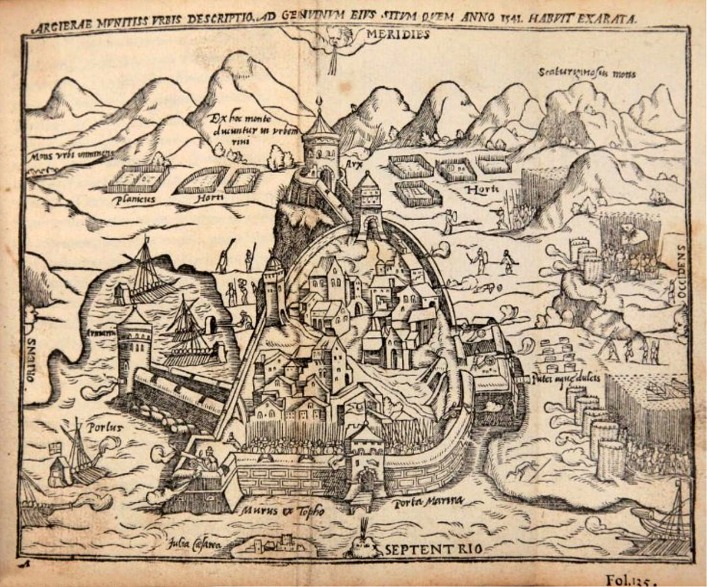

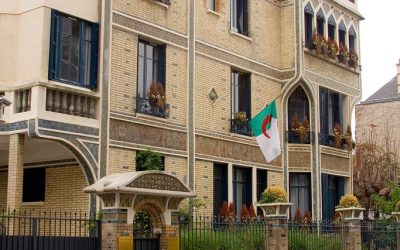
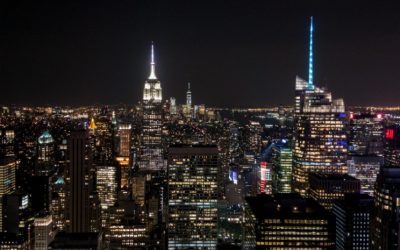
0 Comments